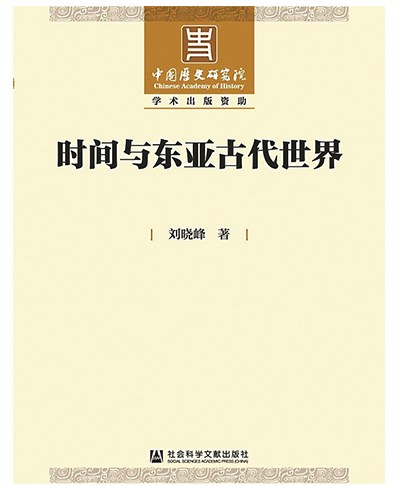
. > WHAT'S NEW > BOOKS
Time culture in ancient China and East Asia
Author : Zhu Guoli Source : Chinese Social Sciences Today 2022-06-07

Time and the Ancient World of East Asia
Time and the Ancient World of East Asia, written by Liu Xiaofeng, a professor from the Department of History at Tsinghua University, focuses on the influence of the ancient Chinese time culture system on East Asia, exploring the characteristics of time culture in East Asia.
From the perspective of the development history of human civilization, the connotation of time, as recognized by ancient people, is far from a purely philosophical or physical concept, but an integral and systematic time culture system. From early to middle ancient times, the Chinese people’s observation, calculation, understanding, and structuring of time originated from their creative imagination, and was rooted in the concept of time and space and the model of the universe constructed by the ancient Chinese, which embodied China’s unique intellectual and cultural system.
Since ancient Chinese realized the law of changing seasons through observation of the sun and starry sky, they have been seeking the reason behind changes of time. “This world is a world with center and order,” became the starting point of their understanding of the world. From this belief, they matched the order of time and the orientation of space, constructed a cultural space featuring the integration of time and space, and thereby built their political and social order. In ancient Chinese political thought, time represented order, which was an important symbol for a regime to govern. Issuing calendars and informing people of the seasons was an important means of state power to influence and control society.
As the formation of a relatively mature and stable time culture system in ancient China had a profound influence on the development of Chinese culture, the system also radiated throughout East Asia through the spread of calendars, and had an impact on its time culture, forming an “East Asian time culture system cultural circle” that centered on China.
Liu places the folk customs that relate to the idea of life and death, daily production, and life in the context of East Asian time and space. Based on this, he investigates the spread and development of shigandang culture, which uses stones to ward off evil spirits and pray for good fortune, in Ryukyu, Vietnam, and the DPRK, and explores the emergence and evolution of the Japanese belief in Tateyama hell, revealing the relationship between life views and time in East Asia, centered on relevant beliefs of life culture in ancient China. In addition, the author probes the spread, influence, and interplay of Chinese culture and thought in East Asia, including “divination by carrying a mirror and overhearing words,” and the culture of a “peach” [with multiple symbolic meanings, such as warding off evil spirits].
Zhu Guoli is from the Institute of Dunhuang Studies at Lanzhou University.
Ye Shengtao made Chinese fairy tales from a wilderness
Ye Shengtao (1894–1988) created the first collection of fairy tales in the history of Chinese children’s literature...
-
How northern ethnicities integrated into Chinese nation
2023-09-18
-
Mogao caves
2023-09-12
-
Mogao Grottoes as ‘a place of pilgrimage’
2023-09-12
-
Time-honored architectural traditions in China
2023-08-29
-
Disentangling the civilizational evolution of China
2023-08-28
-
AI ethics in science fiction
2023-08-23













 2011-2013 by www.cssn.cn. All Rights Reserved
2011-2013 by www.cssn.cn. All Rights Reserved